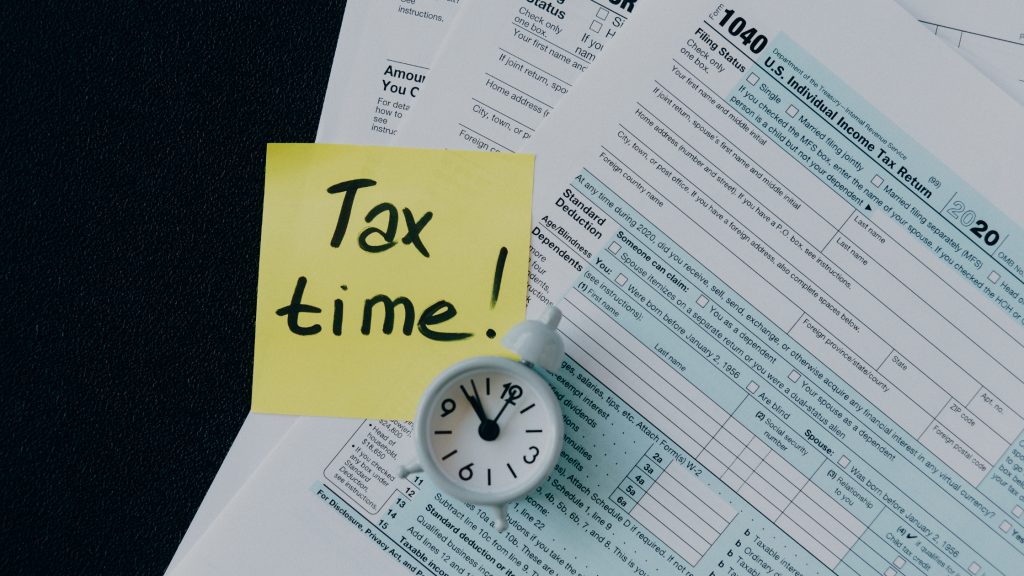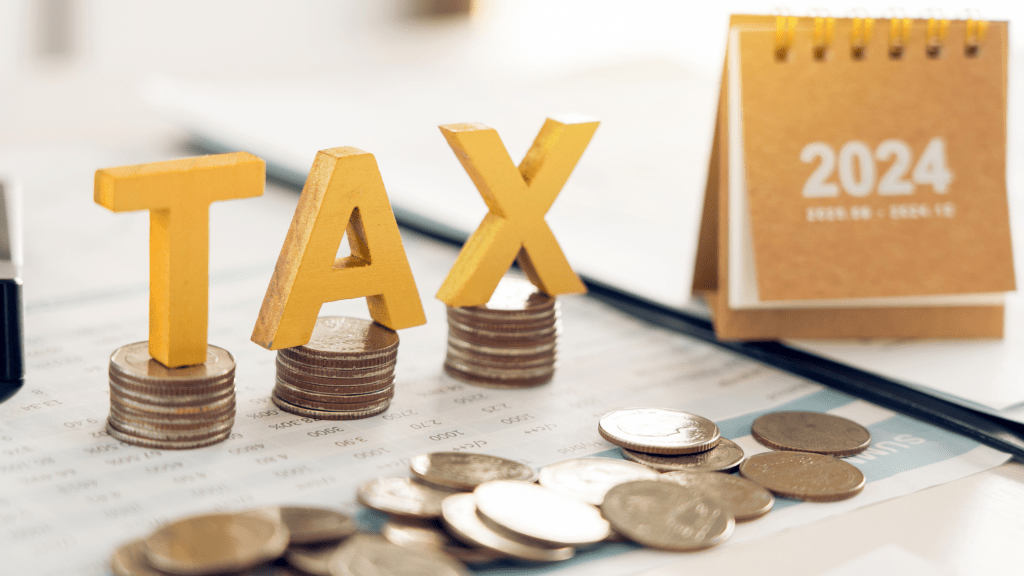Fortnightly Tax Table: Key Insights for Property Investors to Optimize Cash Flow in Australia

Fortnightly Tax Table: Key Insights for Property Investors When it comes to maximizing cash flow in property investment, understanding the Fortnightly Tax Table is a game changer. This table, used by the Australian Tax Office (ATO), plays a pivotal role in helping property investors align rental income with tax obligations more efficiently. Mastering it can ensure that you’re making the most of your income streams, without unexpected surprises come tax season. Let’s dive into why savvy investors should make this tax tool a part of their strategy. The Fortnightly Tax Table isn’t just a routine tax guide—it’s a roadmap for financial control. Unlike monthly or yearly tax systems, fortnightly schedules let investors adjust income and tax payments regularly, helping to maintain steady cash flow and prevent the end-of-year financial crunch. This method can be a major advantage for property investors, especially those with multiple rental properties. By following a fortnightly model, you gain more control over your cash inflow, a critical factor for profitable investments. Choosing the right tax table matters as much as the investment itself. With the Fortnightly Tax Table, property investors can align payments and withholdings to reduce the likelihood of costly tax errors. Every two weeks, the adjustments made in your finances reflect in your rental profits, helping you take advantage of any available deductions in real-time. This means you’re not only keeping better tabs on your money but also minimizing tax stress by spreading out obligations throughout the year. Many property investors may overlook the significance of timing when it comes to their finances. But with a Fortnightly Tax Table in place, you’re embracing a proactive approach to income and tax management. This setup helps investors stay consistently aligned with tax laws and effectively budget for necessary expenses, from maintenance costs to property upgrades. By integrating the fortnightly approach, you’re setting up your portfolio to yield optimal results while maintaining a stable financial framework. Incorporating the Fortnightly Tax Table into your strategy can be the edge that sets you apart. It provides a regular, predictable structure that allows for consistent growth and ease in financial planning. As tax time approaches, you’ll be steps ahead, with a clear record of your tax contributions and income flow. For any investor aiming to make a lasting impact in the property market, embracing fortnightly tax management is a choice that promises lasting returns and peace of mind. Why the Fortnightly Tax Table Matters for Property Cash Flow The Fortnightly Tax Table can be a powerful tool for property investors looking to optimize their cash flow. By organizing tax payments into manageable, biweekly increments, it helps investors avoid large, unexpected tax bills and maintain a consistent income stream. For property owners juggling multiple rentals, this predictable setup makes it easier to plan for expenses and allocate resources effectively, keeping your portfolio stable and profitable. Using the Fortnightly Tax Table aligns well with cash flow goals by helping investors smooth out income and tax liabilities. With a fortnightly approach, tax obligations are divided into smaller, frequent payments, which means there’s less pressure at the end of the year. For investors who depend on steady income to cover mortgage payments, maintenance, and property upgrades, this consistency can be a significant advantage. Timing is everything in property investment, and the Fortnightly Tax Table gives investors better control over their financial calendar. This method matches income collection with tax requirements, meaning property owners are never caught off guard by a sudden tax obligation. Instead, they can align their income and tax contributions in a way that optimizes cash flow and supports strategic financial planning. When it comes to tax efficiency, the Fortnightly Tax Table offers property investors an edge by helping them track income and tax deductions regularly. With consistent, biweekly updates, investors can more easily monitor and claim deductions in real time, minimizing tax liabilities throughout the year. This hands-on approach can lead to better budgeting and significant savings, adding value to any property portfolio. For those looking to future-proof their investments, the Fortnightly Tax Table is an ideal choice. It provides a structure that allows for seamless financial management, even as rental properties increase, or market conditions fluctuate. By adopting a fortnightly tax strategy, property investors can secure a reliable, predictable income flow, ultimately strengthening their position in the property market and maximizing their long-term returns. Comparing Fortnightly and Weekly Tax Tables for Optimal Returns For property investors, deciding between a Fortnightly Tax Table and a Weekly Tax Table is key to optimizing returns. The fortnightly option offers a structured payment rhythm that aligns well with rental income, helping investors avoid the frequent budgeting adjustments that come with weekly taxes. This makes it ideal for those who prioritize steady cash flow without weekly disruptions. The Weekly Tax Table, however, may suit those looking for ultra-precise income management. With more frequent tax payments, investors gain tighter control over cash flow but must also stay on top of the constant deductions. While this approach offers precision, it can add complexity for those managing multiple income sources or property portfolios. In contrast, the Fortnightly Tax Table provides a “sweet spot” between simplicity and control. By matching biweekly deductions with regular rental payments, investors enjoy a predictable schedule that supports consistent cash flow. This structure often makes the fortnightly table the preferred choice for those wanting ease and financial stability. The administrative burden is also lighter with the Fortnightly Tax Table. While weekly payments require constant monitoring, fortnightly payments allow for smoother financial planning, freeing investors to focus on property management and growth. This simplicity is a significant benefit for busy investors balancing various financial demands. Ultimately, the choice between the Fortnightly Tax Table and the Weekly Tax Table depends on each investor’s cash flow goals and preference for control. Fortnightly tables often offer an optimal balance, keeping tax management straightforward while still allowing flexibility to adjust as needed. How to Use the Fortnightly Tax Table to Maximize Rental Income Choosing the best tax table
Negative Gearing Calculator: Your Guide to Smarter Real Estate Investments

Negative Gearing Calculator: Discover How to Maximize Your Real Estate Investment Strategy A Negative Gearing Calculator is a valuable tool for real estate investors looking to enhance their financial strategy. By calculating potential tax benefits and projected cash flows, it gives investors a clearer view of the financial impact of negative gearing on their property investments. This clarity helps you make more informed decisions, allowing you to maximize your investment potential and achieve better returns over time. With the Negative Gearing Calculator at your disposal, you can tailor your strategy based on precise calculations and smarter planning. Using a Negative Gearing Calculator allows investors to compare various scenarios and project the financial outcome of their properties. Whether you’re considering a new property purchase or assessing your current portfolio, this calculator helps you explore how negative gearing can reduce your taxable income and improve your cash flow. By understanding these financial benefits, you can position yourself to make investments that align with your financial goals and yield substantial long-term benefits. Additionally, a Negative Gearing Calculator isn’t just about tax savings—it’s a comprehensive tool that can guide you toward a balanced investment approach. By considering both the potential returns and risks, you gain a more holistic view of your real estate portfolio. This makes the calculator an essential asset for anyone aiming to build wealth through real estate, as it empowers investors with actionable insights and optimizes their overall investment strategy. What Does Negative Gearing Mean and How Does It Benefit Investors? What Does Negative Gearing Mean in the context of real estate? Negative gearing occurs when the costs associated with owning an investment property—such as mortgage interest, maintenance, and other expenses—exceed the income generated from renting it out. This results in a net loss, which may sound counterintuitive to some investors. However, negative gearing can create tax advantages by allowing you to deduct this loss from your overall taxable income, making it a popular strategy among property investors seeking long-term growth. For investors, understanding what does negative gearing mean can open doors to potential financial benefits. By offsetting property losses against taxable income, investors may reduce the amount of tax they owe, allowing them to manage cash flow more effectively. This strategy is particularly useful for those aiming to build a robust property portfolio with steady capital growth over time. Although a negatively geared property may operate at a loss in the short term, investors often look to benefit from long-term property appreciation, which can substantially increase their net worth over time. Beyond tax savings, the concept of negative gearing is advantageous because it allows investors to invest in high-growth areas that may otherwise be out of reach financially. By leveraging negative gearing, investors can target properties with strong potential for capital growth, knowing that the tax benefits will help offset any short-term losses. As a result, savvy investors can strategically use negative gearing to expand their portfolio, maximize capital gains, and ultimately enhance their wealth-building strategy. How the Negative Gearing Calculator Helps You Predict Investment Returns The Negative Gearing Calculator is a powerful tool for investors seeking to predict the financial outcomes of their property investments. By inputting details such as mortgage rates, rental income, and property expenses, this calculator provides a clear picture of potential cash flow and tax benefits. This allows investors to analyze whether an investment property will yield a positive or negative return over time, making it easier to plan for both short-term cash needs and long-term financial growth. One of the key benefits of using a Negative Gearing Calculator is its ability to forecast how negative gearing may impact your annual tax situation. By calculating the potential tax deductions from rental income losses, the calculator enables you to see how much of your taxable income could be reduced. For investors looking to maximize their return on investment, this tool helps identify which properties are likely to bring the highest tax benefits, assisting in the selection of properties that align best with their financial goals. Moreover, the Negative Gearing Calculator helps investors simulate different financial scenarios, such as changes in interest rates or fluctuations in rental income. This flexibility allows you to plan for varying market conditions, giving you insights into how your investment returns might change over time. Ultimately, by leveraging this calculator, investors gain a better understanding of their property’s financial performance, empowering them to make smarter, data-driven decisions that support their wealth-building strategy. Comparing Negative Gearing vs. Positive Gearing for Optimal Growth When it comes to property investment, understanding the difference between negative and positive gearing can help you achieve optimal growth. Negative gearing occurs when the expenses of owning an investment property exceed the rental income, creating a net loss. This strategy, often calculated using a Negative Gearing Calculator, offers potential tax benefits by allowing investors to offset this loss against their taxable income. While it may lead to short-term losses, investors aim to benefit from long-term capital appreciation, especially in high-growth markets. Positive gearing, on the other hand, happens when the rental income from a property surpasses the costs of ownership, resulting in a net profit. Unlike negative gearing, this strategy provides an immediate income stream, which can enhance cash flow and offer greater financial stability. However, positively geared properties might be in areas with slower capital growth potential, meaning they may not appreciate as quickly over time. For investors focused on monthly cash flow, positive gearing can be a great choice, while those interested in capital growth may lean toward negative gearing. A Negative Gearing Calculator can be particularly helpful in comparing these strategies. By inputting key financial details, investors can see the potential tax advantages of negative gearing versus the immediate income benefits of positive gearing. This comparison enables investors to determine which approach aligns best with their financial goals—whether they prioritize cash flow now or aim for substantial property appreciation over time. Ultimately, both strategies offer unique benefits, and a careful evaluation of each can support a
How Overlooking Small Tax Deduction Mistakes Can Impact Your Investment Returns

The Impact of Small Tax Deduction Mistakes on Your Investment Returns When it comes to maximizing investment returns, even the smallest tax deductions mistakes can have long-lasting effects. A missed deduction, inaccurate classification, or overestimated expense might seem trivial, but each error can slowly chip away at your profits. Over time, these seemingly minor mistakes snowball, reducing the overall growth of your investments and impacting your bottom line. Each overlooked tax deductions mistakes translates to lost potential savings, which could have been reinvested for greater gains. Simple mistakes can result in missed deductions that, when compounded, mean fewer funds to grow your portfolio. With such small errors gradually eroding your financial growth, you risk losing the full benefits that tax deductions can offer. Effectively managing tax deductions mistakes is key to safeguarding your investments. By thoroughly reviewing your tax deductions, consulting with professionals, or conducting regular audits, you can protect your returns and enhance your portfolio’s resilience. Taking these extra steps ensures that you’re maximizing the value of every investment, safeguarding your future profits, and achieving a financially stronger position. Common Tax Deduction Errors That Investors Overlook One of the most frequent tax deductions mistakes that investors make is misclassifying expenses, which can lead to missed deductions or even unwanted audits. For example, blending personal and business expenses or improperly categorizing repair costs can prevent investors from claiming eligible deductions. This seemingly minor oversight can translate into lost profits and a reduced tax benefit, diminishing the full value of the investment. Another commonly overlooked tax deductions mistakes is neglecting to track small but essential expenses. Many investors dismiss minor costs like property management fees, legal expenses, and travel costs related to investment oversight. When combined over time, these overlooked expenses can represent a substantial missed deduction, resulting in increased tax obligations that gradually cut into the investment’s profitability. Lastly, failing to stay updated on tax law changes often leads to costly tax deductions mistakes. Tax regulations frequently change, impacting what can be claimed and how. By staying informed or consulting tax professionals, investors can avoid outdated deduction methods, helping to maximize eligible claims and secure better returns. Addressing these errors can make a marked difference in an investor’s overall profitability. Small Errors, Big Losses: The True Cost of Overlooked Tax Deductions Overlooking minor tax deductions mistakes may seem inconsequential, but these small errors can have a ripple effect on your finances. For instance, forgetting to claim certain expenses like office supplies or mileage can lead to unclaimed deductions that accumulate over time. Each missed claim results in higher taxable income, directly cutting into your investment’s profitability and limiting your growth potential. The real cost of these small oversights is that they add up, diminishing returns with each tax year. Investors often underestimate how much their tax deductions impact long-term gains, allowing missed deductions to eat away at their wealth gradually. Over time, the financial toll of these tax deductions mistakes can mean the difference between a successful investment and one that merely breaks even. Taking steps to eliminate tax deductions mistakes is essential for investors who want to maximize returns. Regularly auditing expenses and working with tax professionals can help ensure all eligible deductions are captured, preserving more capital for reinvestment. By addressing these errors, you enhance your investment’s efficiency and create a stronger foundation for wealth accumulation. Simple Steps to Avoid Costly Tax Deduction Mistakes One of the most effective ways to avoid tax deductions mistakes is by maintaining organized and detailed records. This means tracking all receipts, expenses, and invoices related to your investment. A well-organized record system ensures you won’t miss out on any eligible deductions and makes tax time much smoother. Simple documentation practices save money by capturing every possible deduction. Another key step is regularly reviewing and updating your understanding of tax laws. Tax regulations frequently change, and what you can claim as a deduction one year might not apply the next. Consulting a tax professional or subscribing to tax updates can help you stay compliant and avoid common tax deductions mistakes that arise from outdated information. By staying informed, you protect your returns. Lastly, conducting an annual review of your tax filings can prevent repeated errors. Many investors overlook small mistakes, not realizing they carry forward year after year. By auditing your tax records periodically, you can catch and correct these issues before they lead to significant financial losses. This proactive approach helps maximize your returns and prevents tax deductions mistakes from eroding your investment growth. How Small Tax Errors Can Affect Your Long-Term Returns Small tax deductions mistakes might seem inconsequential at first glance, but they can have a surprisingly large impact on your long-term investment returns. Failing to claim all eligible deductions means a portion of your profits goes to taxes instead of reinvestment. Over time, this loss compounds, slowing the growth of your investment portfolio and reducing your overall gains. The cost of these minor errors grows significantly when you factor in compounding interest. Every dollar lost to tax deductions mistakes is a dollar not reinvested, missing out on potential returns year after year. What may appear to be a small oversight today can lead to considerable financial setbacks in the future, ultimately weakening your investment strategy. Avoiding tax deductions mistakes is essential for maximizing returns and building a solid financial foundation. By carefully reviewing tax filings each year, investors ensure they are fully benefiting from every eligible deduction, securing a stronger financial future and enhancing long-term profitability. Each avoided error contributes to a more robust portfolio, creating sustainable wealth over time. Securing Your Profits: Avoiding Common Tax Deduction Mistakes Today Safeguarding your investment returns means staying vigilant about tax deductions mistakes that can eat away at your profits. Errors like misreporting expenses or forgetting to claim minor deductions can accumulate over time, creating avoidable financial drains. By proactively managing deductions, you protect your earnings and build a stronger foundation for future growth. Accurate record-keeping is one of the best defenses
Weekly Tax Table vs Fortnightly Tax Table: A Guide for Property Investors and Landlords

Understanding the Difference: Weekly Tax Table vs Fortnightly Tax Table for Property Investors Understanding the differences between the Weekly Tax Table and the Fortnightly Tax Table can make a significant impact on how property investors and landlords manage their income and tax responsibilities. These tables aren’t just for payroll; they serve as valuable tools to help you determine how much tax to withhold on a weekly or fortnightly basis, aligning your financial strategy with tax compliance requirements. For property investors, choosing the right table isn’t merely a matter of convenience—it can influence your cash flow and long-term financial planning. Using the Weekly Tax Table may help if you’re receiving frequent rental income, while the Fortnightly Tax Table could work better for those on a bi-weekly schedule. Either way, understanding these tables will enable you to handle income fluctuations more effectively. By aligning your withholding with the Weekly Tax Table or the Fortnightly Tax Table, you’re not only staying compliant with tax laws but also enhancing your cash flow management. With the right approach, property investors can make informed decisions on their tax obligations and maximize their investment returns. By aligning your withholding with the Fortnightly Tax Table 2023 or the Weekly Tax Table, you’re not only staying compliant with tax laws but also enhancing your cash flow management. The Fortnightly Tax Table 2023 outlines precise withholding amounts based on income brackets, which can help you adjust to the latest tax requirements and avoid unexpected liabilities. For instance, if your rental income falls within the range of $1,500–$2,000 bi-weekly, your withholding might be approximately $300 under the latest guidelines, ensuring you’re contributing an accurate amount without impacting your cash flow excessively. With the right approach, property investors can make informed decisions on their tax obligations and maximize their investment returns. Why Property Investors and Landlords Should Care About Tax Tables Tax tables might seem like a minor detail in financial planning, but for property investors and landlords, they play a crucial role in maintaining smooth cash flow and compliance. The Weekly Tax Table and Fortnightly Tax Table provide essential guidance on tax withholding, ensuring that income is managed in line with ATO standards, helping avoid unexpected tax bills down the line. By aligning with the right tax table, property investors can better control how rental income is withheld and applied toward taxes. For those receiving regular rent payments, the Weekly Tax Table can streamline weekly withholding, while the Fortnightly Tax Table might suit investors with bi-weekly income schedules. Choosing the right table allows for a more balanced approach to tax payments, reducing surprises at tax time. When landlords understand and utilize these tax tables effectively, they not only simplify their tax obligations but also reinforce their long-term investment strategy. A well-chosen tax table can help landlords retain more of their rental income throughout the year, enabling better financial planning and freeing up resources to reinvest in their property portfolio. How the Weekly Tax Table Impacts Your Property Income Withholding The Weekly Tax Table plays an important role in managing how much of your property income is withheld for taxes, helping property investors align their cash flow with tax obligations seamlessly. For landlords who receive rental income on a weekly basis, this tax table offers a straightforward way to calculate withholdings, ensuring compliance while optimizing income distribution across the year. Using the Weekly Tax Table allows property investors to stay on top of their tax liabilities without compromising their cash flow. By matching withholding frequency with rental income, landlords can achieve greater consistency in their financial planning. For those dealing with bi-weekly tenants, comparing the Fortnightly Tax Table may reveal different options, but weekly withholding offers tighter control for landlords receiving income on this schedule. With the right table in place, investors and landlords can maintain steady financial footing, proactively meeting tax requirements while managing rental income effectively. Leveraging the Weekly Tax Table provides peace of mind, knowing that income is being allocated as needed, reducing the risk of unexpected tax expenses at the end of the year. Benefits of Using the Fortnightly Tax Table in Rental Property Management The Fortnightly Tax Table offers distinct advantages for property managers and landlords looking to optimize their rental property management. By leveraging this table, investors can align their tax withholdings with the income cycle of tenants who pay rent every two weeks. This synchronization can simplify budgeting and enhance cash flow, allowing landlords to better plan their finances. One of the key benefits of using the Fortnightly Tax Table is its potential to reduce the financial burden at tax time. Instead of waiting until the end of the financial year, landlords can effectively manage their tax obligations throughout the year. This proactive approach can alleviate stress and prevent any surprises when it’s time to file, giving investors confidence in their financial standing. While the Weekly Tax Table may work well for some, the Fortnightly Tax Table is tailored for those whose income structure supports a bi-weekly payment cycle. By making this choice, property investors can enhance their cash flow management, keep more income in their pockets, and ensure a smoother financial experience overall. With the right table, managing rental properties becomes less of a chore and more of a strategic advantage. Choosing Between Weekly and Fortnightly Tax Tables: Key Factors for Landlords When it comes to choosing between the Weekly Tax Table and the Fortnightly Tax Table, landlords must consider several key factors that can significantly impact their financial strategies. Understanding the timing of rental income is crucial. If you have tenants who pay rent weekly, the Weekly Tax Table may be the best fit, providing a straightforward method to calculate tax withholdings in line with your cash flow. Another important aspect is your overall cash flow management. The Fortnightly Tax Table can offer advantages for those who prefer a bi-weekly payment cycle, potentially allowing for better financial planning and less frequent calculations. This option may also help landlords manage their liquidity, keeping
Understanding Tax Depreciation Deductions: Your Guide to the ATO Depreciation Schedule

Disclaimer: The information provided here is general in nature and should not be considered as professional tax advice. For specific tax guidance, please consult a qualified tax professional or visit the ATO website. Tax depreciation is a vital tool for property investors, allowing them to claim deductions on the wear and tear of their investment property over time. Properly understanding and applying these deductions can lead to significant tax savings. The investment property depreciation schedule is an essential resource that outlines the allowable depreciation deductions for your property. This schedule breaks down the value of your property’s structural elements and fittings, guiding you on how to claim depreciation over time. By staying organized and informed, you can ensure you’re fully utilizing the deductions available to you. Navigating ATO regulations for depreciation claims can be complex, but it’s crucial for compliance and maximizing your tax benefits. The ATO has clear guidelines on how to calculate and document depreciation. Familiarizing yourself with these guidelines will help you make accurate claims and avoid any potential issues. Consulting with a tax professional or a specialist in property depreciation is highly recommended. They can help you create a detailed depreciation schedule, choose the best depreciation methods, and ensure that your claims are aligned with ATO requirements. Professional advice can save you time and maximize your deductions, enhancing your overall financial outcome. In summary, understanding the ATO depreciation schedule and applying the appropriate strategies can greatly benefit your financial planning. Staying informed and seeking professional guidance when necessary will help you make the most of your investment. Maximizing Your Tax Depreciation Deductions: A Guide to the ATO Process Understanding how to maximize your tax depreciation deductions can significantly improve the financial performance of your investment property. Making a depreciation claim in accordance with ATO guidelines reduces your taxable income and can lead to higher returns. Key considerations for maximizing your depreciation deductions include: ● ATO regulations allow you to claim deductions on both the building structure (capital works) and the assets within (plant and equipment). ● Renovated properties may also qualify for depreciation, even if they are not newly built. ● Engaging a quantity surveyor can help ensure that all eligible deductions areaccurately recorded and claimed. ● Keeping detailed records of all expenses and property updates is essential forsupporting your depreciation claims. By properly leveraging tax depreciation deductions, you can improve your property’s cash flow and reduce the costs associated with owning an investment property. Consulting a tax professional is advisable to ensure that you are making the most of the deductions available to you while adhering to ATO requirements. Navigating ATO Tax Depreciation Rules: Claiming Depreciation on Your Rental Property Successfully claiming depreciation on a rental property requires a good understanding of the ATO’s tax depreciation rules. These rules are designed to help investors offset the natural wear and tear on their properties, ultimately reducing taxable income. Creating a detailed investment property depreciation schedule is crucial for accurately claiming these deductions. This schedule, which includes both capital works and plant and equipment, ensures that you don’t miss out on potential tax benefits. Adhering to ATO guidelines is essential for compliance and maximizing your financial advantages. Incorporating an organized depreciation schedule into your tax strategy not only helps with claiming depreciation but also ensures that you’re fully leveraging the tax benefits available under ATO rules. With the right approach, you can increase your investment’s profitability while staying compliant with tax laws. Understanding Division 43 Deductions: A Guide to ATO Capital Works Deductions Division 43 deductions allow property investors to claim capital works deductions for the construction costs of their buildings. These deductions apply to structural elements like walls, floors, and roofs and are claimed over several years as per the ATO’s depreciation rules.Accurately calculating your Division 43 deductions is important for maximizing your return. This involves maintaining detailed records of construction costs and ensuring that they align with ATO guidelines. Additionally, being aware of the ATO’s instant asset write-off provisions can help you claim immediate deductions on eligible items, further optimizing your tax strategy. How an ATO Depreciation Schedule and Depreciation Calculator Can Enhance Your InvestmentStrategy Understanding how an ATO depreciation schedule and a property depreciation calculator work together is essential for maximizing your investment property tax depreciation. The ATO depreciation schedule outlines the depreciation rates for various assets within your property, enabling accurate calculation of your deductions. Using a depreciation calculator can help estimate your potential deductions, including options like the low-value pool depreciation and the ATO’s instant asset write-off. These tools allow you to group smaller assets and accelerate their depreciation, maximizing the deductions you can claim. Aligning your tax strategy with a precise ATO depreciation schedule ensures that you are fully compliant with ATO regulations while maximizing your tax benefits. This approach can improve cash flow and increase the profitability of your investment property. Conclusion: Leveraging ATO Depreciation Rules for Your Investment Property In conclusion, effectively navigating the ATO’s depreciation rules can significantly enhance your investment property’s financial performance. Obtaining an investment property tax depreciation schedule is one of the first steps to ensure you’re maximizing your deductions. Consulting with a quantity surveyor can provide invaluable assistance in creating a compliant depreciation schedule that accurately reflects the value of your property. Their expertise ensures that your claims are precise and in line with ATO guidelines. Finally, understanding how to apply tax depreciation schedules will help you better grasp the potential benefits. With the right knowledge and tools, you can manage tax depreciation effectively, leading to improved cash flow and a more profitable investment.
What Happens If You Can’t Pay Your Taxes?

What happens if you complete your tax return and find that you can’t pay the amount you owe? The IRS will attempt to collect, using measures such as interest charges on unpaid amounts or fines and jail time ( in extreme cases). This isn’t supposed to happen. You’re supposed to pay income taxes gradually throughout the year so that you won’t owe much in April or will even be entitled to a refund of overpaid taxes. Employees have income tax withheld from their paychecks. Self-employed taxpayers pay quarterly estimated taxes directly to the Internal Revenue Service (IRS). But sometimes your life situation changes, or an unusual one-time event occurs during the year. When you prepare your annual return and haven’t paid throughout the year, you may get an ugly surprise—you could owe hundreds or thousands of dollars that you didn’t expect and might not have the money to pay. What Happens If You Don’t File or Don’t Pay If you find yourself in trouble, you do not want to skip filing your tax return or fail to pay your taxes altogether. The government has the authority to forcibly seize your assets if you don’t try to make good on your income tax liability. In the most extreme situations, you may be subject to jail time. Filing Your Taxes Late If you are not going to be able to file your tax return by the deadline, you should file an extension of time by submitting Form 4868 to the IRS by the due date (typically April 15th). It is important to note that filing this form does not give you an extension on the time to pay your tax liability. You’re still expected to send any money you owe by the deadline. If you file your tax return late—or fail to file at all—you will be subject to failure-to-file penalties. These charges accrue on returns that have not been filed by the due date (or extended due date if you’ve filed a Form 4868). The charges accrue at a rate of 5% of the unpaid taxes for each month or part of a month that a tax return is late. The charges max out after five months, at which point the failure-to-file penalty is 25% of the unpaid tax liability. If your return is filed more than 60 days after the due date (or extended due date), the minimum failure-to-file penalty is $450 or 100% of your total tax liability, whichever is smaller. As you can see, filing late does not pay off, with or without an extension. Even if you do not have the funds to pay your outstanding tax liability by the due date, you should still file your tax return, so you don’t incur extra failure-to-file penalties on top of failure-to-pay penalties and interest. The Bottom Line Whatever you do, don’t ignore the problem. The government can forcibly seize your assets if you don’t try to make good on your income tax liability. The IRS can freeze your bank accounts, garnish your wages, seize physical assets, and place a lien on any assets you own, including your home. If you find you can’t pay what you owe, go ahead and file your return and pay what you can. Then work with the IRS, perhaps with the assistance of a tax professional, to formulate a plan for paying the balance of your tax bill over time.
What Is a Tax Return, and How Long Should You Keep It?

What Is a Tax Return? A tax return is a form or form filed with a tax authority that reports income, expenses, and other pertinent tax information. Tax returns allow taxpayers to calculate their tax liability, schedule tax payments, or request refunds for the overpayment of taxes. In most countries, tax returns must be filed annually for an individual or business with reportable income, including wages, interest, dividends, capital gains, or other profits. Understanding Tax Returns In the United States, tax returns are filed with the Internal Revenue Service (IRS) or with the state or local tax collection agency (Massachusetts Department of Revenue, for example) containing information used to calculate taxes. Tax returns are generally prepared using forms prescribed by the IRS or other relevant authorities. In the U.S., individuals use variations of the Internal Revenue System’s Form 1040 to file federal income taxes. Corporations will use Form 1120 and partnerships will use Form 1065 to file their annual returns. A variety of 1099 forms are used to report income from non-employment-related sources. Application for automatic extension of time to file U.S. individual income tax return is through Form 4868. Typically, a tax return begins with the taxpayer providing personal information, which includes their filing status, and dependent information. What Documents Do I Need to Keep for My Tax Returns? For accurate tax filing, it’s crucial to retain various documents such as W-2s, 1099s, and receipts for deductions. These documents serve as evidence of your income, expenses, and eligibility for tax credits. The Sections of a Tax Return In general, tax returns have three major sections where you can report your income, and determine deductions and tax credits for which you are eligible: Income The income section of a tax return lists all sources of income. The most common method of reporting is a W-2 form. Wages, dividends, self-employment income, royalties, and, in many countries, capital gains must also be reported. Deductions Deductions decrease tax liability. Tax deductions vary considerably among jurisdictions, but typical examples include contributions to retirement savings plans, alimony paid, and interest deductions on some loans. For businesses, most expenses directly related to business operations are deductible. Taxpayers may itemize deductions or use the standard deduction for their filing status. Once the subtraction of all deductions is complete, the taxpayer can determine their tax rate on their adjusted gross income (AGI). Tax Credits Tax credits are amounts that offset tax liabilities or the taxes owed. Like deductions, these vary widely among jurisdictions. However, there are often credits attributed to the care of dependent children, individuals aged 65 or older, or those with permanent and total disability. Note that there may be income limitations or restrictions to these credits. After reporting income, deductions, and credits, the end of the return identifies the amount the taxpayer owes in taxes or the amount of tax overpayment. Overpaid taxes may be refunded or rolled into the next tax year. Taxpayers may remit payment as a single sum or schedule tax payments periodically. Similarly, most self-employed individuals may make advance payments every quarter to reduce their tax burden. The Bottom Line A tax return is a document filed with the tax authorities that reports income, expenses, and other relevant financial information to calculate and pay taxes. It is recommended to keep tax returns for at least three to seven years to comply with potential audit requirements and the period of limitations for tax amendments.
Tax Trick to Get a $1 Million Property for $8000 a Year

Buying a $1 million investment property can seem daunting but there’s a perfectly legal way to pay just $8000 a year for it. In Australia, the property isn’t only the best performing investment class over the last couple of decades – it’s also something that can deliver you serious tax deductions and help you cut your tax bill while you build wealth. Owning an investment property isn’t nearly as expensive as most people think, especially after you factor in the available tax benefits, with statistics showing the average cost of a $1 million investment property is $8114 per year with an annual growth of $63,000, meaning that the net benefit to you (benefit fewer costs) works out to be $54,886 each and every single year. While owning an investment property does generally come with a cost, on the flip side, you benefit from owning an asset that grows in value over time. We wanted to unpack what drives these numbers so you can see how this might work for you. Initial Costs of Buying a Property When purchasing a property in Australia, there are several initial costs involved. These may include stamp duty, which varies depending on the state and can be higher in certain regions. Additionally, expenses such as building and pest inspections, as well as legal fees for managing the registration process, should be considered. However, with an incredible opportunity like acquiring a $1 million property for just $8000 a year, the investment potential becomes even more enticing. Ongoing Costs of Buying a Property In addition to the mentioned factors, buying a property may also entail ongoing costs such as apartments and townhouses having associated expenses, houses requiring payment of council rates, water rates, insurance costs, property management fees, repairs, and maintenance. Making principal repayments gradually reduces your debt over time, with mortgage interest costs involved. Financial Benefits of an Investment Property When you own an investment property the benefits are two-fold. In addition to the rent paid by your tenants, you are also likely to benefit from the growth in value of your property over time. Upon the recent calculation, Westpac data shows the averaged 6.3% growth return annually on Australian property since 1870. Given the continuous rise of property prices, we presume that the numbers would likely be significantly higher considering that this data is from 2019. Property Costs are Tax Deductible If the expenses on your investment property are more than the income you receive, you can claim this amount as a tax deduction at your marginal tax rate to reduce the after-tax cost of running your property. Based on Australian marginal tax rates, if your annual taxable income is above $45,000, your marginal tax rate + Medicare levy is 34.5%. This only means you’ll receive a tax refund of $0.345 for every dollar your investment property costs you. Meanwhile, if your income and tax rate are higher, you’ll receive even more back at tax time. This then will give you back at least a third of whatever you pay. Buying an investment property is something that can seriously accelerate how quickly you get ahead. But it does come with risks that are important to manage. It can fast-track your money success and go a long way to set up the future you want. Please contact us for clarification, or further advice, regarding any of the topics covered in this newsletter.
Opportunities To Save Tax With Super Contributions

Did you know that there are also some excellent tax benefits you can take advantage of right now – just by making your own voluntary superannuation contributions? When you retire, your superannuation is likely to become an important source of your income. That’s why it’s a good idea to top it up while you are working. Generally, money invested in super is taxed at a lower rate than your personal income tax rate and we want you to be aware of opportunities to save tax with super contributions. 1. Catch up on Super Payments Contributions From 1 July 2018, if you are a kind of person who has a total superannuation balance of less than $500,000, you now can make “carry-forward” concessional super contributions. With this, you can now access your unused concessional contributions caps on a rolling basis for five years while those amounts that have not been used after five years will expire. 2. How Low-income Earners are Taxed If you’re a low-income earner earning up to $37,000 per year, the low-income superannuation tax offset will ensure that you don’t pay a higher tax rate on your super contributions than your income tax rate. The said offset will be paid directly to your super account and the payment will be equal to 15% of your concessional contributions for the year, capped at a maximum of $500. Meanwhile, those high-income earners who have accumulated between $41,112 and $56,112 earnings during the 2022 financial year may also be eligible for super co-contributions from the government of 50 cents for each dollar, up to a maximum of $1,000 in non-concessional (after-tax) contributions. 3. How High-income Earners are Taxed If you earn more than $250,000 a year (including super contributions), your concessional contributions are taxed at an additional 15%, known as Division 293 tax, bringing the total tax on these contributions to 30%. Only the concessional contributions which make your total income exceed $250,000 are subject to the additional tax. Suppose your concessional contributions exceed the concessional contributions cap of $27,500 per year. In that case, the excess is included in your tax return and taxed at your marginal tax rate (less an allowance for the 15% already withheld by your super fund). You can choose to withdraw some of the excess contributions to pay the additional tax.

